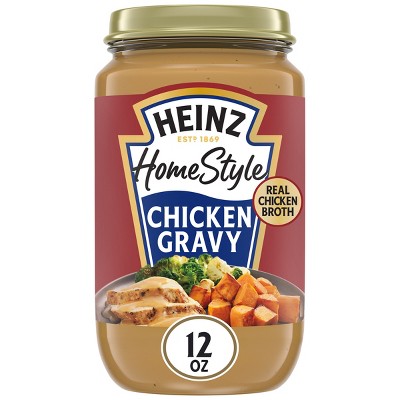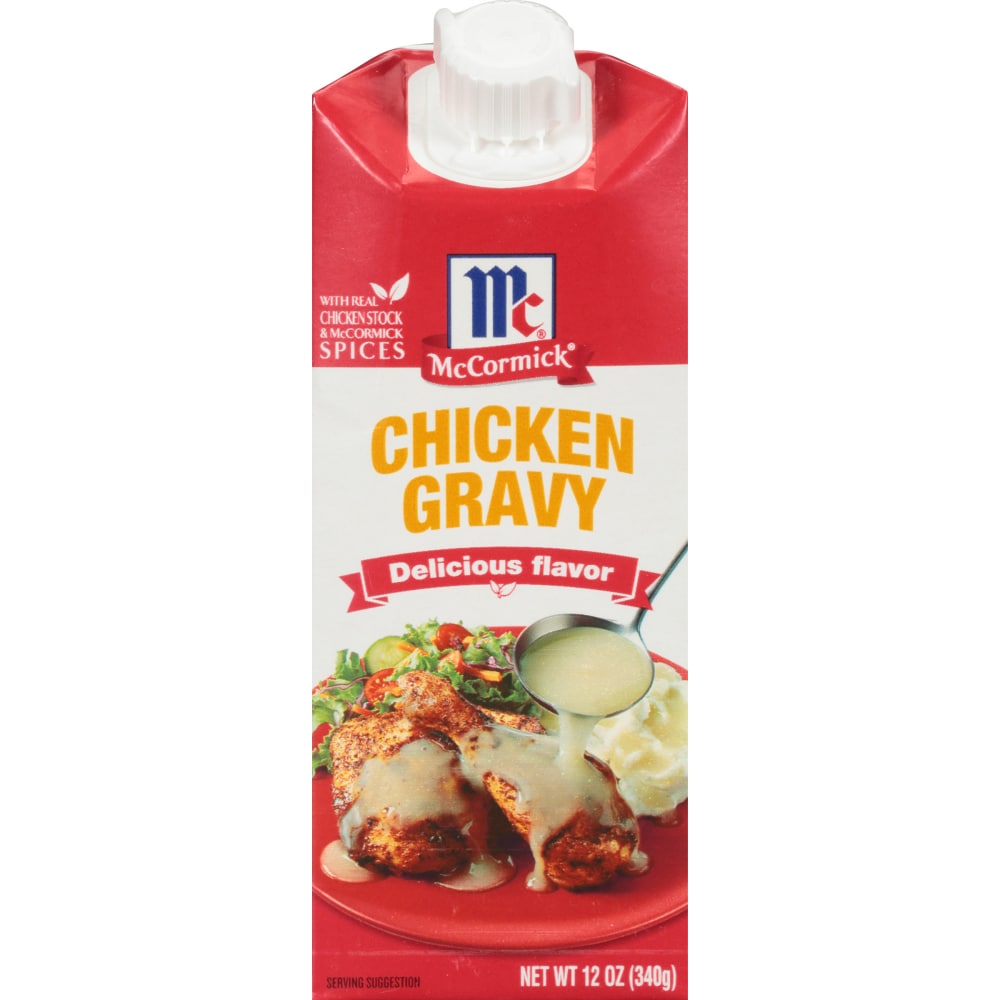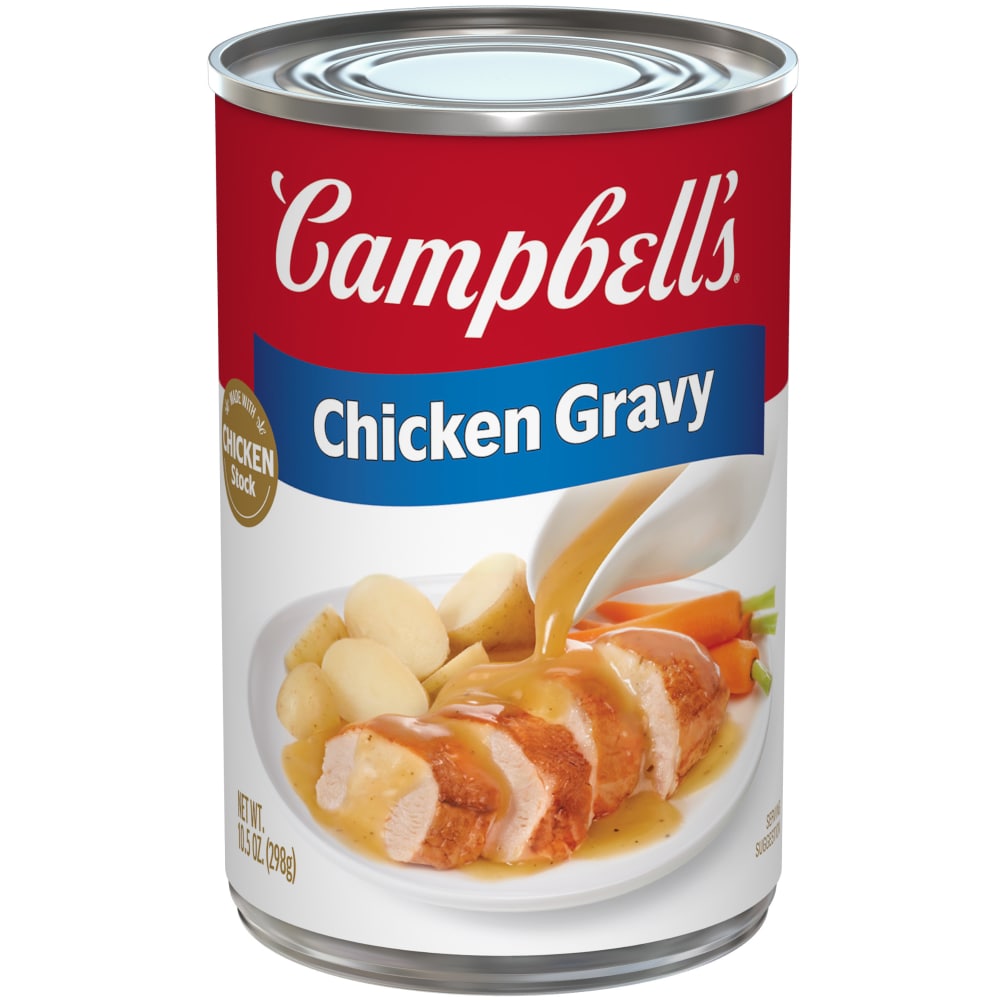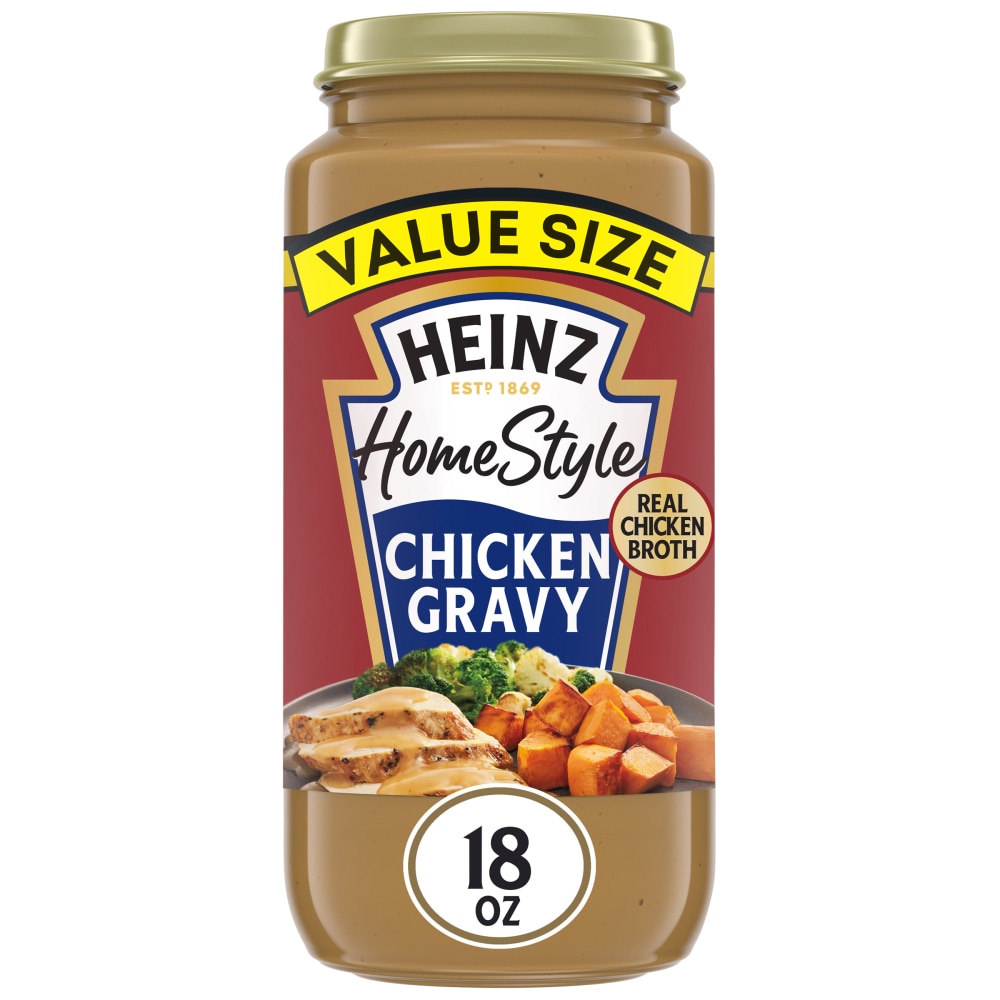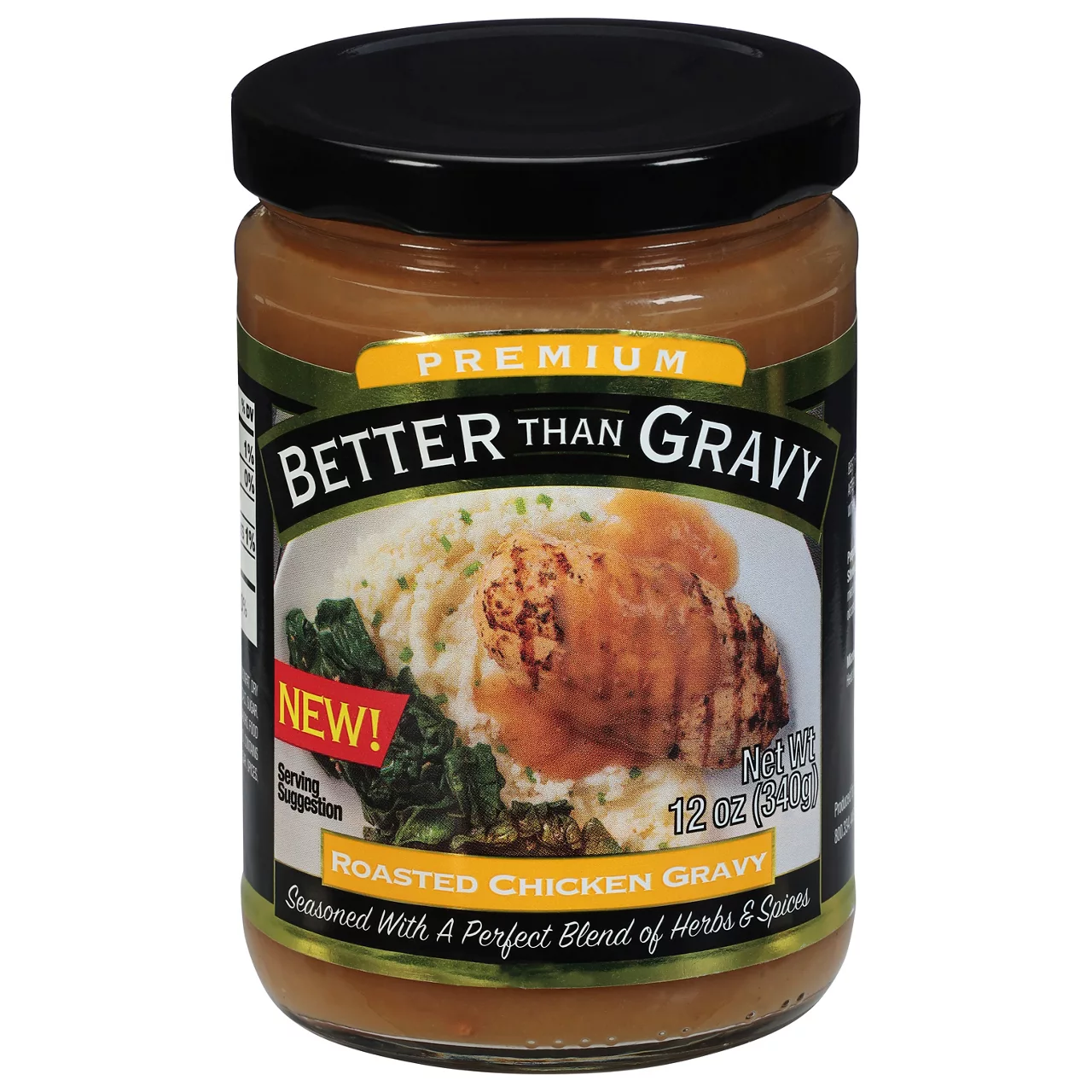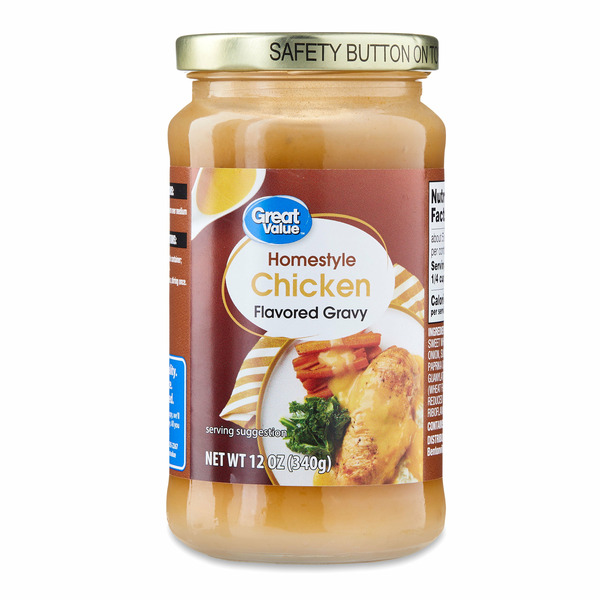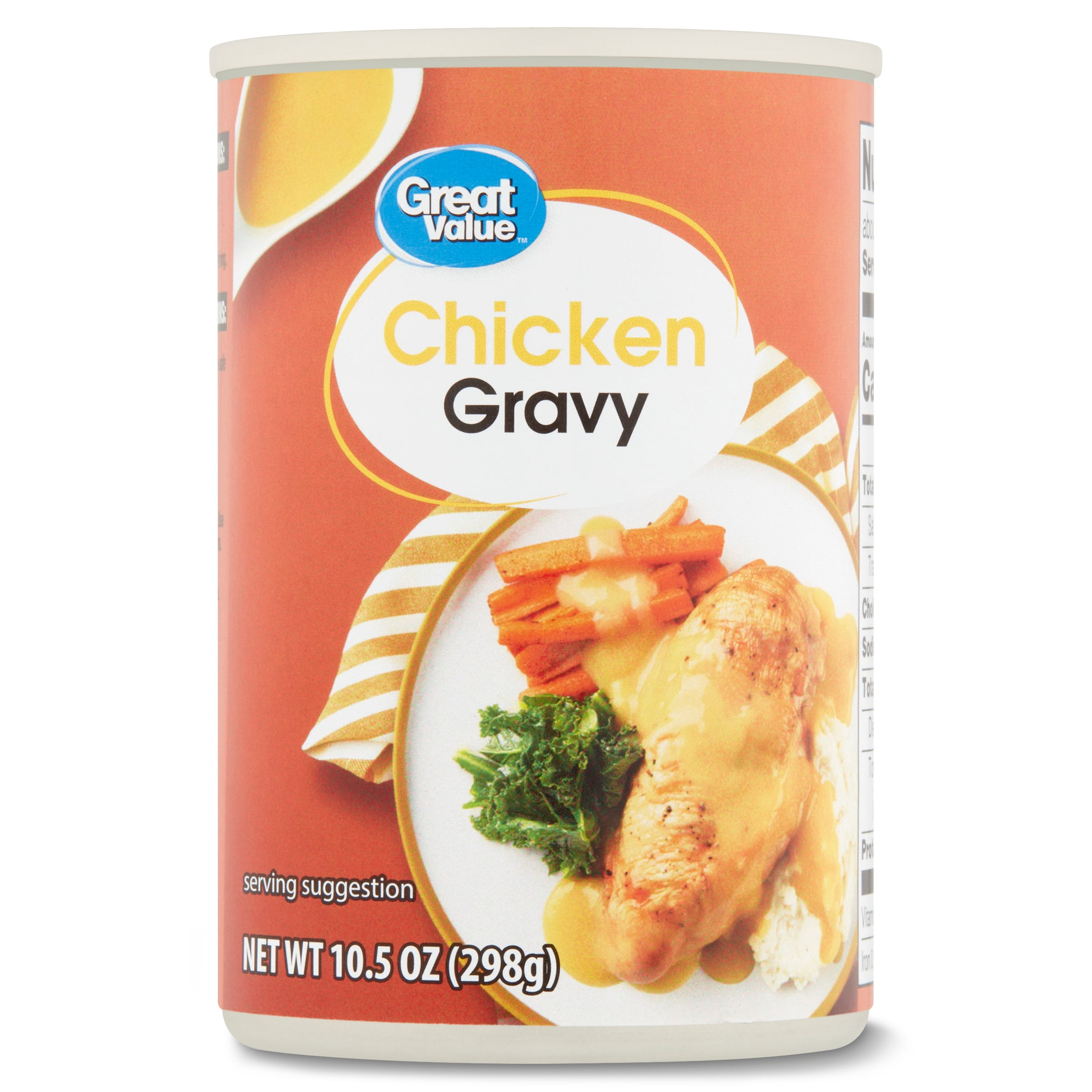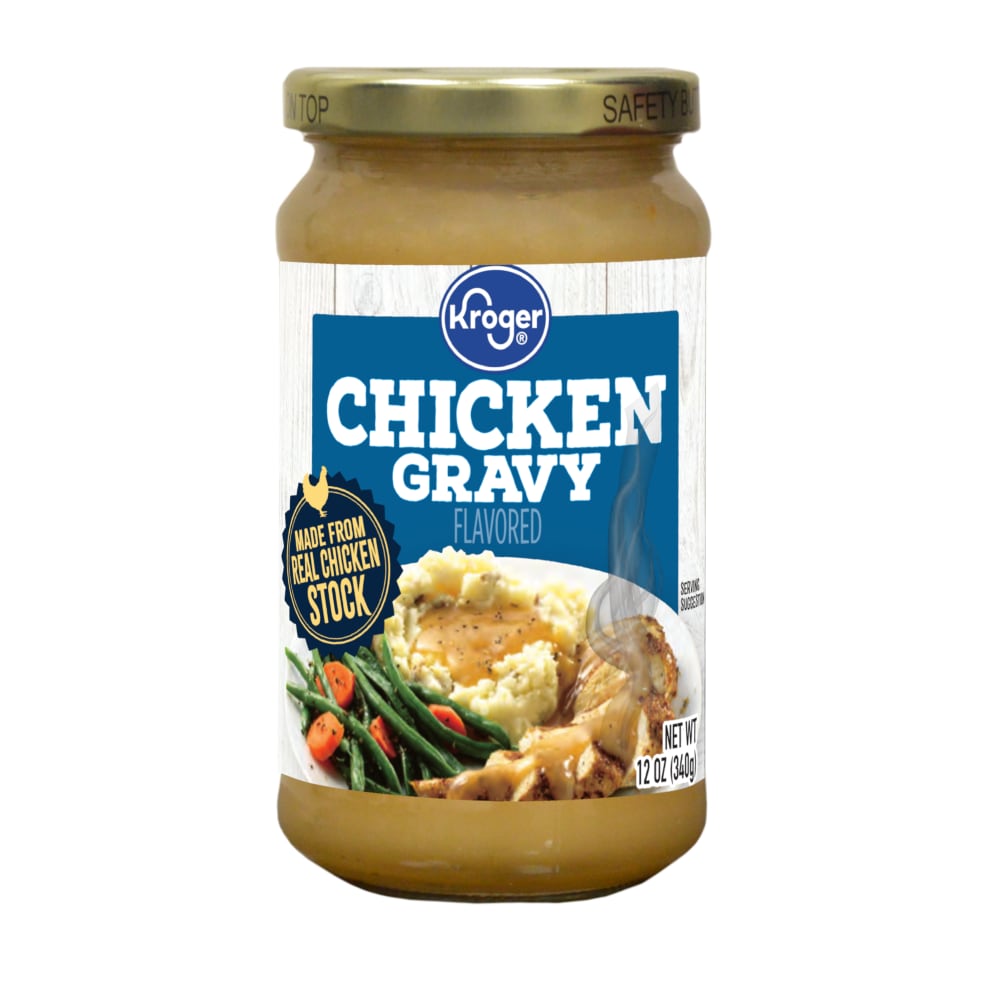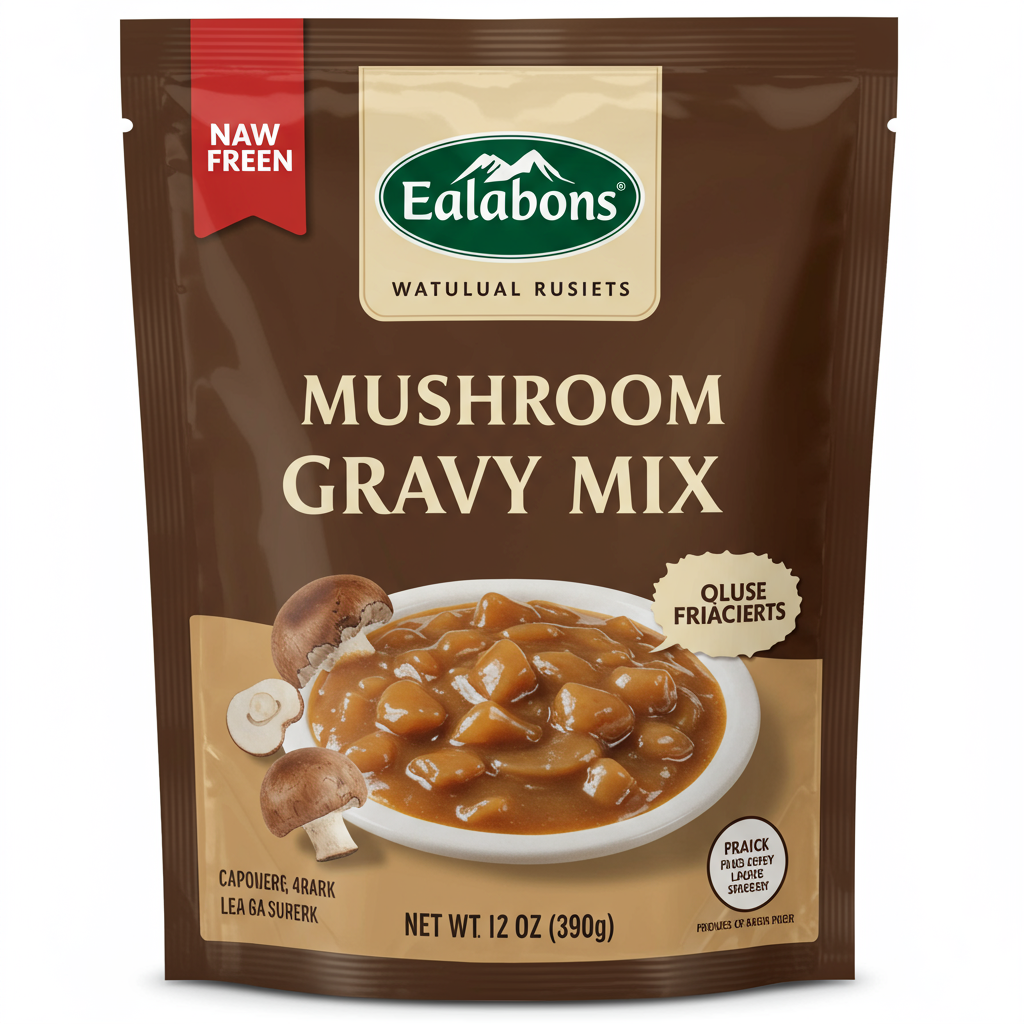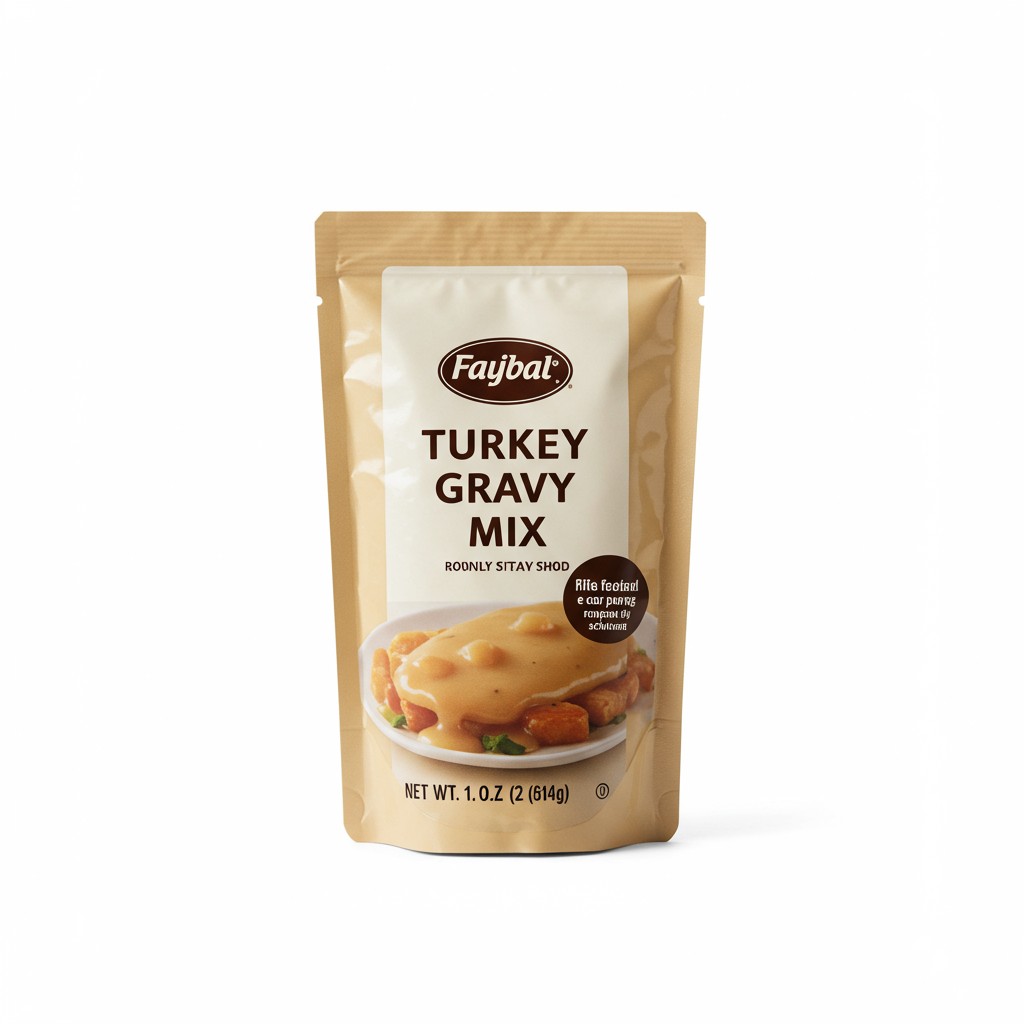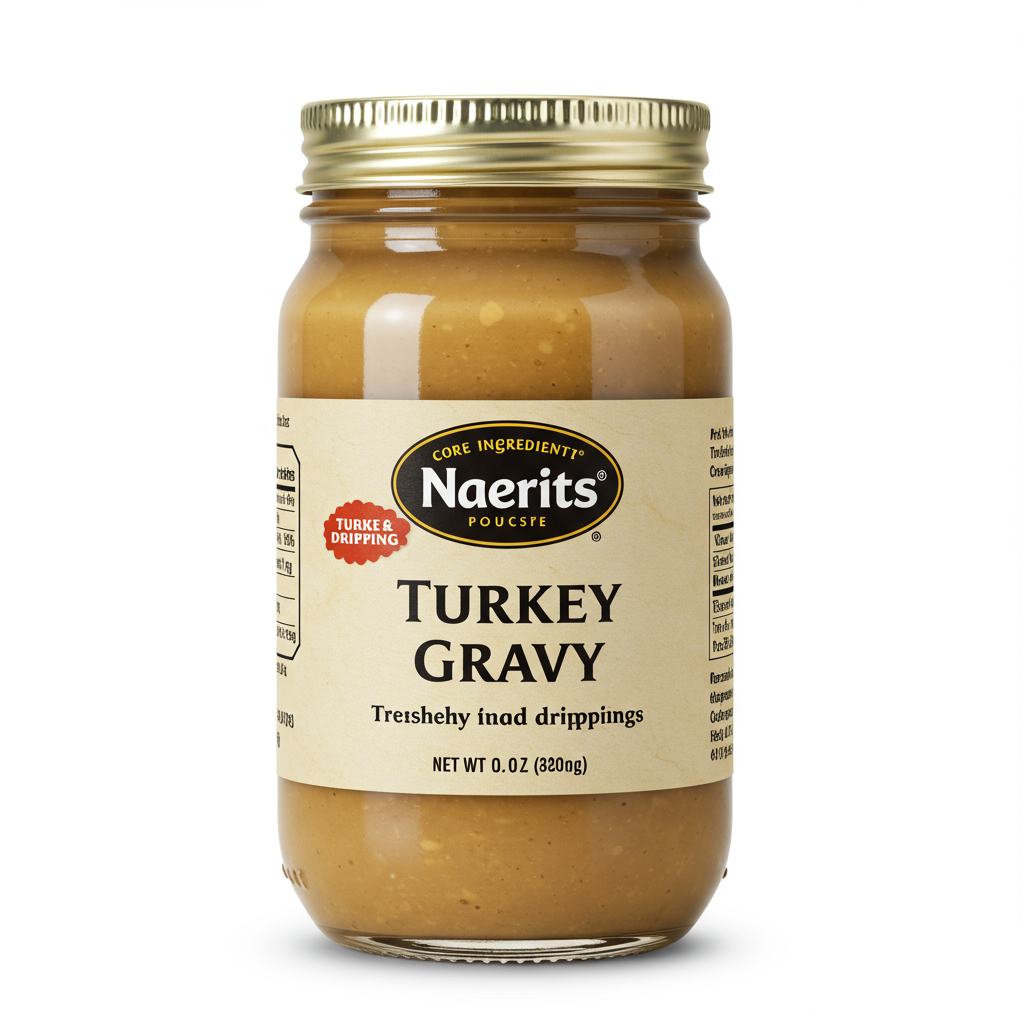CONDIMENTS AND SAUCES
Chicken Gravy
Chicken gravy is a savory sauce made from the juices and flavorful components of cooked chicken, often combined with a thickening agent such as flour or cornstarch. It is a classic accompaniment to roasted or fried chicken, as well as other poultry dishes, enhancing the taste and adding moisture to the dish. Chicken gravy is a common component of traditional Sunday roasts and festive meals, imparting a rich, comforting flavor to the meal.
To prepare homemade chicken gravy, the chicken drippings are collected, and a roux is made by adding flour to the pan and cooking it to remove the raw flour taste. Chicken broth or stock is then added while continuously whisking to create a smooth sauce. Seasonings such as salt, pepper, and herbs may also be added to suit personal taste. Commercially prepared chicken gravy is also available in powdered or canned forms and can easily be used for a quick and convenient mealtime addition to your dish.
63%
CARBS
29%
FAT
8%
PROTEIN
245 Chicken Gravy Products
Heinz Gravy, Chicken, Home Style
McCormick Simply Better Chicken Gravy
Campbell's Chicken Gravy
Great Value Homestyle Chicken Flavored Gravy
Heinz Classic Chicken Gravy Value Size
Better Than Gravy Gravy, Roasted Chicken, Premium
Great Value Homestyle Chicken Flavored Gravy
Great Value Chicken Gravy
Heinz HomeStyle Classic Chicken Gravy, Jar
Kroger® Chicken Gravy
Chicken Gravy Is Frequently Used With
Chicken Gravy FAQ
Chicken gravy is relatively easy to prepare, but a few common issues might arise. Some people struggle with lumps in their gravy, which usually results from adding flour directly to liquid or not whisking the gravy sufficiently during cooking. The gravy could also turn out too thin or too thick, or it might lack flavor. To avoid these issues, always combine your flour with a little cold liquid first to create a smooth paste before adding it to the hot broth. Consistent whisking during the cooking process helps to avoid lumps.\n\nThe thickness of the gravy is a matter of personal preference, it's best to start with a proportion of 2 tablespoons of flour to 1 cup of broth and adjust accordingly. If it's too thin, prepare more roux and whisk it into the gravy, if it's too thick add more broth. Taste your gravy regularly throughout the cooking process and adjust seasonings as necessary. You'll get the most flavor out of your gravy by using a good-quality chicken broth.\n\nAdding a splash of white or cream wine, cream, or even a bit of butter can really elevate the flavor of your gravy. Always make sure to strain your gravy before serving for a silky texture. A general hack is to make gravy in large batches and freeze the leftovers for future use.
Why is my chicken gravy lumpy?
What can I do to prevent my chicken gravy from being bland?
Why is my gravy too thin or too thick?
Can I freeze my chicken gravy?
What should I do if my gravy tastes too floury?
What can I do if my gravy is too salty?
I only have powdered gravy, is there a way to make it taste homemade?
Can I use cornstarch instead of flour as a thickening agent?
Can I use water instead of broth to make chicken gravy?
Can I make chicken gravy in advance?
Expiration & Storage Tips
When does chicken gravy expire?
If unopened, a store-bought bottle or can of chicken gravy can last about a year past the best by date, or until the expiry date printed on its package, when stored in a cool, dark place. After opening, it should be refrigerated immediately and consumed within 3 to 5 days. Homemade chicken gravy should also be kept in the refrigerator and is safe to consume within 2 to 3 days. The gravy can also be stored in the freezer for up to 3 months.
How do you tell if chicken gravy is bad?
Check for changes in color, texture, and smell of the chicken gravy. If it has become darker, thicker, or has a sour smell, then it has likely gone bad. Also, if you see mold or other unusual growth in or on the gravy, do not consume it. When in doubt, it's always best to err on the side of caution and dispose of suspicious gravy. If the can of gravy is leaking, rusting, bulging or severely dented, it's best not to use it as it might be contaminated.
Tips for storing chicken gravy to extend shelf life
• Always store gravy in a tightly sealed container in the fridge.
• Allow the gravy to cool before storing to reduce condensation in the container, but don't leave it out for more than two hours.
• Write the date on homemade gravy containers before storing, especially if you plan to freeze it.
• If you need to store gravy for a longer period, consider freezing it in portioned containers for easy use. Just remember to leave some space in the container as gravy expands when frozen.
• For thawing, you can leave the gravy in the fridge overnight or use the defrost function on your microwave. Once thawed, heat gravy thoroughly before serving.
EXPIRES WITHIN
19 - 24
MONTHS
Substitutes
Health Info
Macros
3g
CARBS
1g
FAT
0g
PROTEIN
Allowed on these diets
LOW FAT
HIGH CALCIUM
KETO
MEDITERRANEAN
LOW CARB
LACTOSE FREE
Contains these allergens
WHEAT

